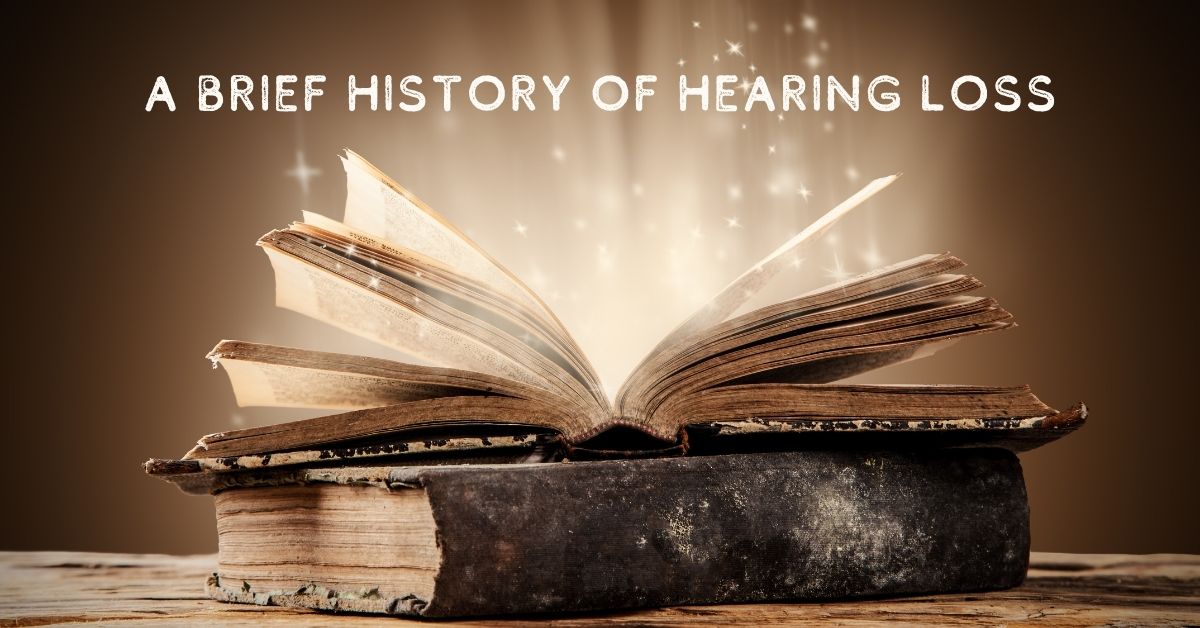Hearing loss is one of the most common health conditions that people experience globally. According to the World Health Organization, over 466 million people have disabling hearing loss. Fortunately, there is extensive information, resources, specialists, treatment options etc. that exists today which helps us better understand and address hearing loss. Prior to the modern era, little was known or documented about impaired hearing though we know it is a condition that has existed since humans have existed!
Earliest Evidence of Hearing Loss
The earliest known evidence of hearing loss in humans dates back to at least 10,000 years ago. Discovered in Iraq, skeletal remains indicating impaired hearing were found on an archaeological site. This skeletal evidence showed abnormal bone growths in the ear canal or external auditory exostoses. For the two skeletons that were discovered, the bone growths were severe enough to impact one’s ability to hear.
In addition to this skeletal evidence, there is an archive of documented history of hearing loss. This includes:
- Egypt, 1550 BC – the first documented evidence of hearing loss can be traced to the Ebers Papyrus of Ancient Egypt. The Ebers Papyrus is one of the oldest medical texts which outlines extensive herbal knowledge and hundreds of remedies to treat pain, illness, and disease. It contains a remedy for “Ear that Hears Badly” which we now know is hearing loss.
- Greece, 350 BC – first attitudes and opinions of people with hearing loss (and deafness) can be traced back to Aristotle and Plato. Their ableist views included: “ability to reason was intrinsically linked with the ability to speak”. What they meant by this was that people who were deaf were inherently unable to reason and were therefore unintelligent. Plato also wrote: “if we had no voice or tongue, and wished to make things clear to one another, should we not try, as dumb [mute] people actually do, to make signs with our hands and head and person generally?”. Unfortunately, this thinking continued to shape common understandings of hearing loss which also reveals that hearing loss existed in this time period.
You might be wondering if people had hearing loss during ancient time periods, how did they treat it before the development of modern medicine?
Past “Cures”
Over many centuries, doctors and naturopaths have attempted to cure hearing loss by often trying bizarre remedies. These remedies included inserting random things in the ear, oral treatments, and old medical practices. Here are a few examples:
- In the ear remedies:
-
-
- Remember the Ebers Papyrus? Well that remedy for “Ear that Hears Badly” consisted of injecting various liquids in the ear. This included: olive oil, bat wings, goat urine, and ant eggs!
- Pouring drops of pig or bear fat in the ears
- Inserting a twig in the ears
-
- Bloodletting: a common way that doctors treated illnesses and diseases. It refers to withdrawing blood from someone’s body; it was thought to be cleansing and beneficial for health.
- Blistering: an old practice of creating and popping blisters in the ear canal. This was believed to drain the toxins and bacteria creating hearing loss.
- Oral Remedies: herbalists would often make mixtures (of various herbs) that they believed could alleviate hearing loss.
These “cures” did not work because as we know now, hearing loss is a condition that is still incurable. There are ways that it is effectively treated and the most common treatment is hearing aids which have significantly evolved over time.
Development of Hearing Aids
There is written history showing that people used hearing instruments that amplified sound to increase their ability to hear more clearly as early as the 16th century. But the invention of the telephone in the late 1800s paved the way for the development of hearing aids. The technology used for the telephone provided the foundation for a new landscape of devices that were electronic.
- 1898: The first electronic type of hearing aid was created It used a carbon transmitter and was made to sit on desks which means that it was not easily portable.
- 1920: the first portable hearing aid was created
As technology continued to advance, hearing aids consistently evolved. This history has brought us to today where treatment is widely available!
Treating Hearing Loss Today
In recent years, hearing aids have undergone a technological renaissance. Features such as Bluetooth connectivity and rechargeability are now widely available with advanced hearing aids. If you have noticed changes in your hearing and are ready to seek treatment, we’re here to help. We offer the most sophisticated hearing technology to date. Contact us today!

